Horizon Aircraft (Nasdaq: HOVR) announced on October 14, 2025, their selection of Pratt & Whitney Canada’s PT6A turbine engine, which will provide the propulsion for the Cavorite X7 hybrid-electric eVTOL. This is exciting on many levels.
Surprise Surprise!
For those following Horizon Aircraft and their Can-Do Crew, 🇨🇦 who are hard at work towards completing a full-scale prototype of the Cavorite X7 hybrid-electric eVTOL within 16 months, it should come as no surprise that Pratt & Whitney Canada’s PT6A was chosen to provide the propulsive power for the Cavorite X7. In previous interviews Horizon’s CEO Brandon Robinson has mentioned the PT6 turbine engine. This is nonetheless very exciting for the AAM sector and for aviation as a whole. This article aims to explain the multitude of reasons why the PT6A was chosen, what that means for the Cavorite X7 hybrid-electric eVTOL, and the operators that will be fortunate enough to have Cavorite X7 eVTOLs in their fleet.
Excitement in the Air! ✈️
This news has brought excitement in the air,✈️ but not necessarily a surprise.
Horizon’s pick, the Pratt & Whitney Canada PT6A engine was an obvious choice to many observers in the industry. But in order to analyse this clearly, we need to get two definitions out of the way:
Excitement: the state of feeling or showing happiness and enthusiasm
Surprise (noun): an event, a piece of news, etc. that is unexpected or that happens suddenly
Safety First!
First and foremost, just as Horizon Aviation’s CEO and Co-Founder Brandon Robinson told eVTOL buzz during Verticon 2025 in Dallas, the priorities concerning safety and performance are non-negotiable for Horizon. The PT6A is an obvious choice for Horizon Aircraft, taking these two serious goals into consideration. Make no mistake, Horizon Aircraft will build its name on safety and performance, as well as reliability; the same way the PT6 has been synonymous with safety, dependability and reliability for multiple decades.
From 1963 to 2016, the PT6 had an inflight shutdown rate of 1 per 333,000 hours.
In 2016 the PT6 had an inflight shutdown rate of 1 per 651,126 hours during the entirety of 2016.
These impressive records of the PT6 aren’t by chance. Pratt & Whitney made sure to put safety as their #1 priority, and performance as their #2. Sounds familiar…..The Cavorite X7 will be no different in that regard with Horizon’s Can-Do Crew on the scene…
Birds Of A Feather…🪽🪶
By having a longtime Canadian aviation pioneer Pratt & Whitney Canada teaming up with an emerging Canadian aviation pioneer Horizon Aircraft, we can see the next phase of Advanced Air Mobility (AAM) right before our eyes. For Horizon, this means one less variable to deal with in an eVTOL industry full of prototyping, testing, and certification. For Pratt & Whitney Canada, this partnership with Horizon opens the door to applications for their engines into the rapidly growing sector of eVTOLs.
Let’s look on LinkedIn, where Horizon Aircraft posted the following statement:
We’re proud to share another major milestone in bringing the Cavorite X7 to life.
Horizon Aircraft has selected the Pratt & Whitney Canada PT6A engine to power our full-scale Cavorite X7, a huge step forward in the realization of our hybrid eVTOL aircraft. The PT6A is one of the most trusted and proven engines in aviation, known for its reliability and performance across the most demanding missions. Pairing this world-leading engine with our hybrid design will allow the Cavorite X7 to fly farther, faster, and more efficiently. We’re especially proud that the agreement brings together two Canadian innovators helping to shape the future of aerospace right here at home.
A heartfelt thank you to the team at Pratt & Whitney Canada, we’re honoured to collaborate with such a respected global leader as we take this next step.
Statement from Horizon Aircraft’s LinkedIn page
Birds of a feather flock together.🪽🪶 Horizon Aircraft’s Cavorite X7 and Pratt & Whitney Canada’s PT6A go very well together, especially to all the destinations a hybrid-electric eVTOL will be needed to take passengers and cargo.
You Can’t Spell “Brain”🧠 Without “Brian”
In a video featuring both Horizon Aircraft Co-Founder & Chief Engineer Brian Robinson, and Engineer Kirk Creelman, these gentlemen explain why the ultra-reliable PT6-A was chosen to power the ultra-reliable Cavorite X7 hybrid-electric eVTOL (video below):
Brian Robinson, the very brilliant innovator, pilot, and Chief Engineer of Horizon’s Can-Do Crew 🇨🇦 fully understands the benefits unlocked by having a decades-proven power plant for their Cavorite X7 hybrid-electric eVTOL. There’s a reason you can’t spell “Brain”🧠 without “Brian”.
“Pratt and Whitney’s got a tremendous fleet out there and an extremely good safety record. We wanted that. It had some other factors on as well: extremely light, it’s one of the quieter versions, a bunch of reasons, but safety is number one. What makes the PT6 so reliable quite frankly, is just the amount of time and effort they put in. They got a huge fleet worldwide, running in all sorts of climates. So they get all the feedback so they can refine the engine to a very high standard. Because there are so many around, you go anywhere in the world, you can maintain it. They have infrastructure everywhere.” – Brian Robinson, Chief Engineer at Horizon Aircraft
This notion was further elaborated by Pratt & Whitney Canada Vice President of Sales & Marketing and Business Development, Scott McElvaine:
“For more than six decades, the PT6 engine has been at the heart of countless innovations in aviation, continually evolving to meet the needs of customers worldwide”….“Seeing the PT6A selected for Horizon Aircraft’s Cavorite X7 reflects its position as the most modern and versatile engine in its class today, delivering the performance, efficiency, and reliability required for this next generation of aircraft.” – Scott McElvaine, Vice President, Sales & Marketing and Business Development at Pratt & Whitney Canada
In another example of Horizon’s practicality, rather than reinventing the wheel with a new and untested power plant, Horizon focused on their revolutionary fan-in-wing design. Unlike Pratt & Whitney’s legendary PT6A, which is readily available as a product on the world market for prudent and safety-conscious OEMs like Horizon to integrate into their aircraft, there was no eVTOL on the market featuring such a fan-in-wing design (that closes and seals the fan ducts for horizontal flight) as found on the Cavorite X7. Deferring to the turbine experts at Pratt & Whitney who have spent decades perfecting the PT6A turbine engine to provide a perfect power plant solution, freed up resources for Horizon’s Can-Do Crew to utilize their own expertise where it would have the greatest impact (fan-wing-design and larger passenger/payload capacity).
This was confirmed by Horizon Engineer Kirk Creelman, who perfectly elaborated on the reasons why the PT6A was chosen:
“We chose the PT6 engine because it has world renowned reputation. It’s got millions of hours flying on the model, and we have a lot to develop here on this aircraft. There’s a lot of novel systems, and a lot of different electrical systems. The last thing we wanted was a new engine as well. So we picked this engine cuz it’s got a good pedigree. Basically, other eVTOLs don’t have the advantage of using the PT6 as a prime driver. They usually use their lift systems that have been adapted and try to use that for the propulsive power, where we’re actually using the PT6 exclusively for our drive power that can give us exceptional speeds typical of any other aircraft and not be limited to sort of eVTOL performance.” – Engineer Kirk Creelman, Horizon Aircraft
Horizon’s ingenious HOVR wing system

The Cavorite X7 features a revolutionary fan-in-wing design that blends the flexibility of a helicopter with the performance and speed of a traditional aircraft.
Its transforming wings house 14 high-powered lift fans, delivering the vertical thrust needed for smooth and efficient takeoff.

Once the Cavorite X7 reaches a safe altitude and speed, sliding panels conceal the lift fans, allowing it to transition into conventional airplane flight. For landing, it can use a standard runway, or redeploy the fans to touch down on a helipad. Horizon Aircraft claims the Cavorite X7 can even land in a space as small as a tennis court!
Just as Engineer Kirk Creelman explained, the PT6A will provide the Cavorite X7 ‘s drive power (for horizontal flight). This will give the Cavorite X7 multiple attributes that are highly desired by operators in mission critical roles.
As if anyone had any doubts about the PT6A, Horizon Aircraft’s CEO Brandon Robinson, went straight to the point and for the win!
“Choosing the right engine for our full-scale hybrid aircraft was essential. The PT6A is exactly what we need for our full-scale aircraft, and building a relationship with Pratt & Whitney Canada, such a respected, global leader right here at home, is another amazing win.“ – Horizon Aircraft CEO, Brandon Robinson
Pratt & Whitney PT6A: There’s Power In Reliablity!
Video eVTOL buzz filmed at the 2025 NBAA-BACE showing Pratt & Whitney’s PT6A engine (display model):
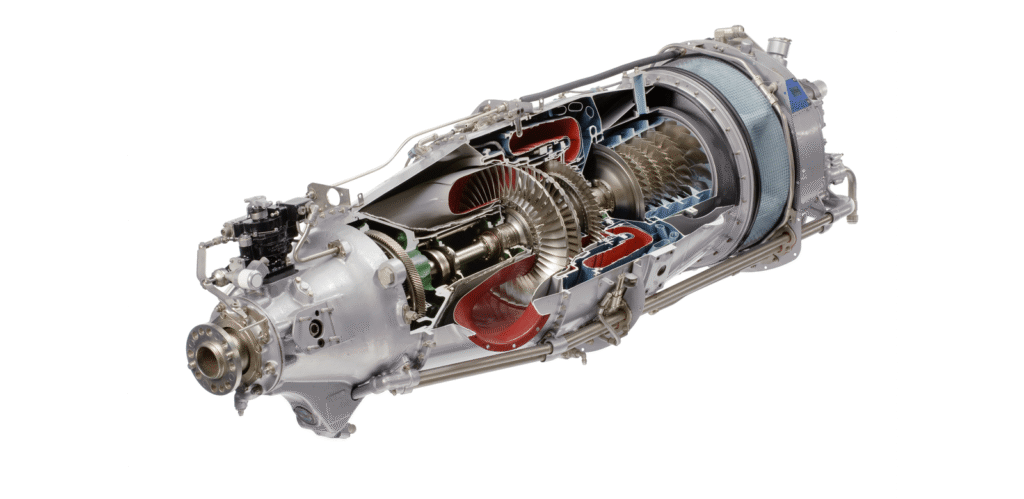
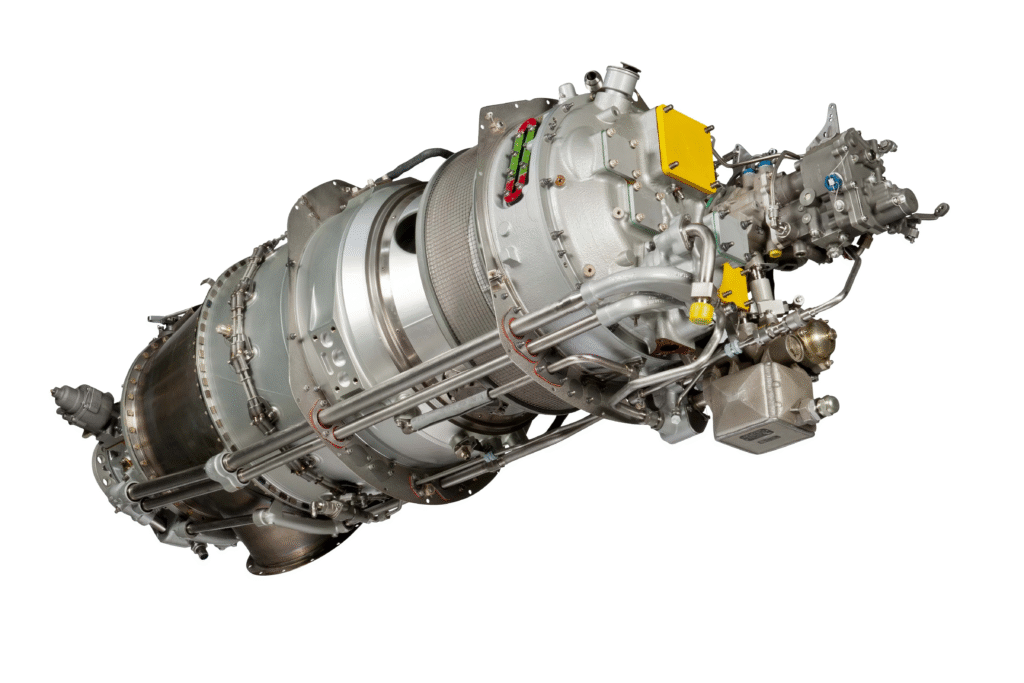
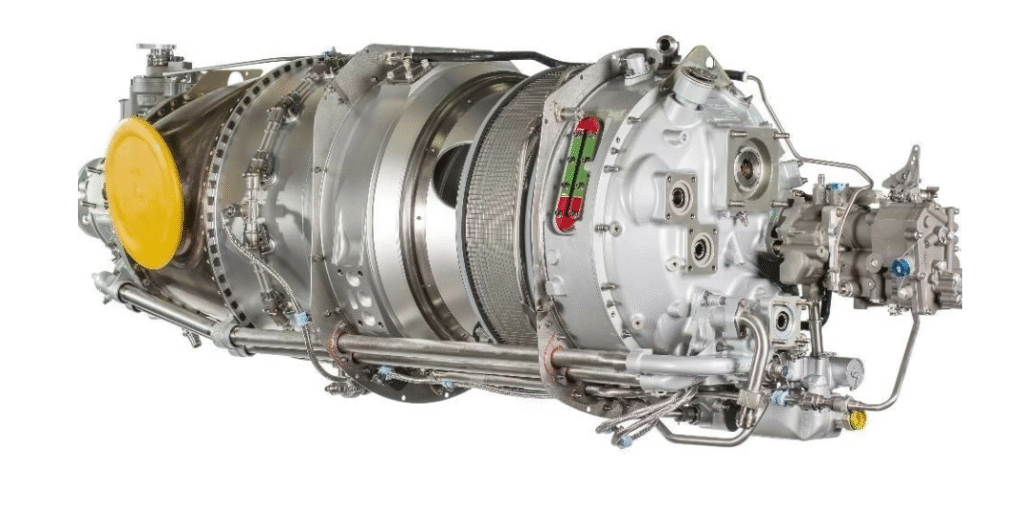
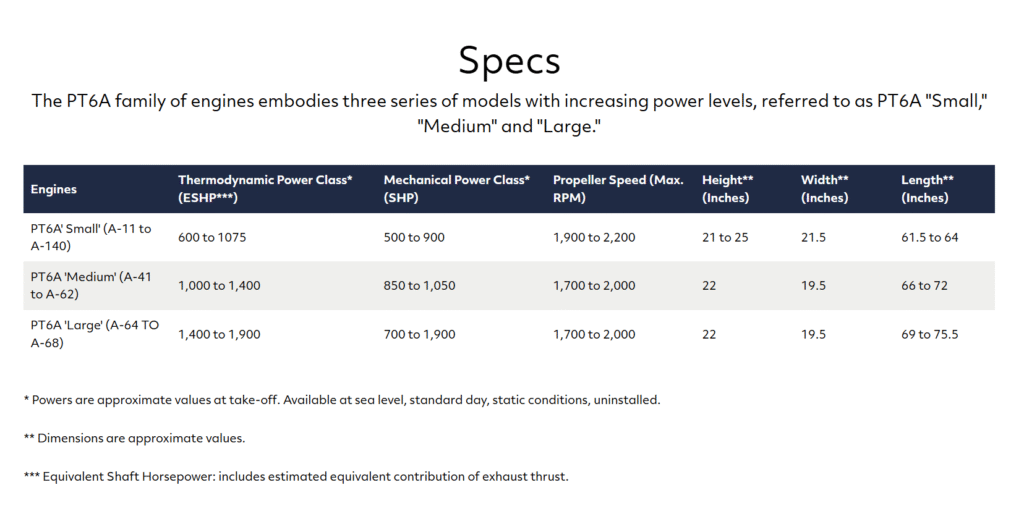

At 450 km/hr (280 mph) the Cavorite X7 can fly at almost twice the speed as the Archer Midnight (241 km/hr, 150 mph).
When seconds count in emergency medical situations, speed matters!
At 450 km/hr (280 mph), Horizon’s Cavorite X7 hybrid eVTOL aircraft will get the patient to the hospital quicker than it’s fully-electric competitors.

Horizon Cavorite X7 ‘s max range of 800 km (497 miles) is more than 3 times as far as the Archer Midnight (161 km, 100 miles).
Connections: Pratt & Whitney Canada & Horizon Aircraft
There are members of Horizon Aircraft’s Can-Do Crew who have decades of experience at Pratt & Whitney Canada.
John Wyzykowski
John Wyzykowski is both the Former Director of Turbofan Engines, as well as Former Senior Director of Engine Development Programs at Pratt & Whitney Canada. Mr. Wyzykowski knows the PT6A like the back of his hand. In 2022 he was awarded with Pratt & Whitney’s Leadership Award as well as Pratt & Whitney Canada’s President’s Award in 2019. With John Wyzykowski being such a recognized expert in turbine engines, who has contributed greatly to Pratt & Whitney Canada’s success, it’s without a doubt that Horizon will maximize the full potential of the PT6A in the Cavorite X7’s revolutionary eVTOL design.

John Wyzykowski
Technical Expert at Horizon Aircraft
- Former Head of Propulsion at Lilium
- Former Senior Director of Engine Development Programs at Pratt & Whitney Canada
- Former Director of Turbofan Engines at Pratt & Whitney Canada
- 40 years of expertise in aviation
- Pratt & Whitney Leadership Awards
- Issued by Pratt & Whitney · November 2020
- President’s Award
- Issued by Pratt & Whitney Canada · September 2019
Three decades at Pratt & Whitney Canada, in various leadership roles along the way (starting from Group Leader to Senior Director), with direct involvement in development of their legendary gas turbine engines, makes John Wyzykowski a real gem in the aviation industry. eVTOL buzz is most fortunate to have an exclusive comment from Mr. John Wyzykowski:
“Having worked over 30 years at Pratt & Whitney Canada developing gas turbine engines for numerous business jet and commuter applications, I was able to apply firsthand the technology and durability philosophy of their engine design system. This, coupled with the inherent adaptability and continuous improvement of the PT6, made it a perfect choice for the unique installation, power generation and reliability requirements of our aircraft.” – John Wyzykowski, Technical Expert at Horizon Aircraft
Dr. John Maris, PhD.
Dr. John Maris, PhD., who is a Horizon Aircraft Board Member, and Senior Advisor, is also no stranger to Pratt & Whitney Canada, nor to hybrid-electric propulsion. As Founder of Cert Center Canada, Dr. John Maris is involved in a $250 million project with Pratt & Whitney, where he is the Chief Test Pilot and Leader of flight test program. Pratt & Whitney Canada’s program involves developing a hybrid-electric propulsion demonstrator using a De Havilland Canada Dash 8 aircraft. Pratt & Whitney Canada aims to create a hybrid-electric system that is 30% more efficient than currently used by turboprops.
Dr. John Maris was recently awarded the prestigious Kelly Johnson Award for outstanding Flight Test engineering by the Society of Flight Test Engineers.
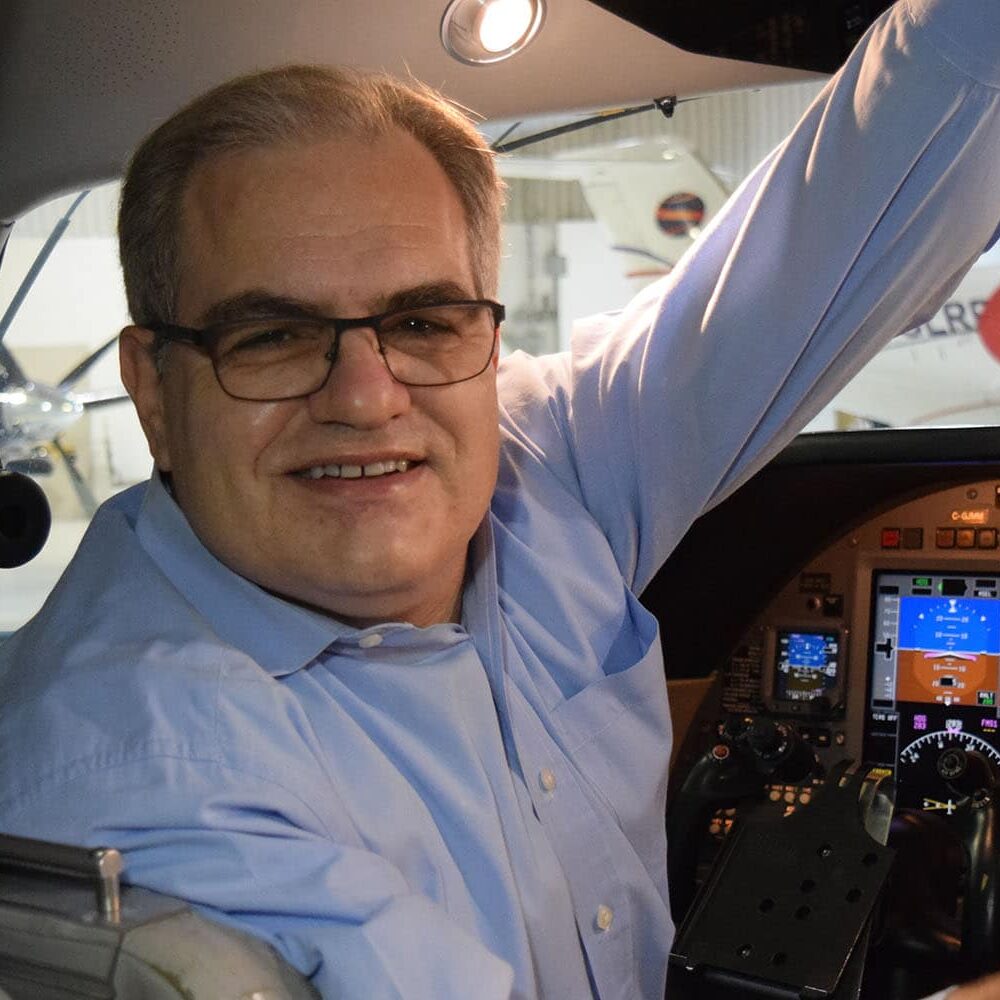
Dr. John Maris, PhD.
Board Member and Senior Adviser at Horizon Aircraft
- Chief Test Pilot at Pratt & Whitney Canada’s RTX Hybrid-Electric Flight Demonstrator project
- Founder of Cert Center Canada
- Canadian Aviation Hall of Fame member
- 6,300 pilot hours
- Kelly Johnson Award in 2025 for outstanding Test Pilot Engineering
- Issued by Society of Flight Test Engineers
A Legacy That Continues in Hybrid-Electric eVTOLs 🇨🇦
Horizon Aircraft has taken a reliable and proven design, and implemented it in their next-generation eVTOL aircraft, the Cavorite X7. The PT6A therefore is again brought to the forefront of aviation. Going where only the strongest dare fly, the PT6A remains an top choice for OEMS like Horizon Aircraft that are only willing to put the very best power plants into their aircraft. The fact that the PT6A has remained such a relevant power plant after all these decades (and placed in an eVTOL nonetheless) is the ultimate proof and testament to the success of the 12 (and more) gentlemen who started this project back in 1956.

Timeline of Major Milestones
1956 – Ronald Riley, President of Pratt & Whitney Canada, tasked engineering manager Dick Guthrie to form a team of gas turbine specialists for the designing of a small gas turbine engine. A budged of C$100,000 was provided for the program.
1957 – Twelve young engineers from institutions and companies such as National Research Council in Ottawa, Orenda Engines in Ontario, Bristol Aero Engines and Blackburn Aircraft were recruited by Dick Guthrie to work on the small gas turbine engine project.
1961 – First flight of the PT6, initially created as a 450 shaft horsepower (340 kW) turboprop to power twin-engined aircraft.
1963 – Mass scale production, as well as certification of the PT6.
2016 – 50% improvement in power-to-weight ratio, 20% reduction in brake specific fuel consumption, 14:1 overall pressure ratio.
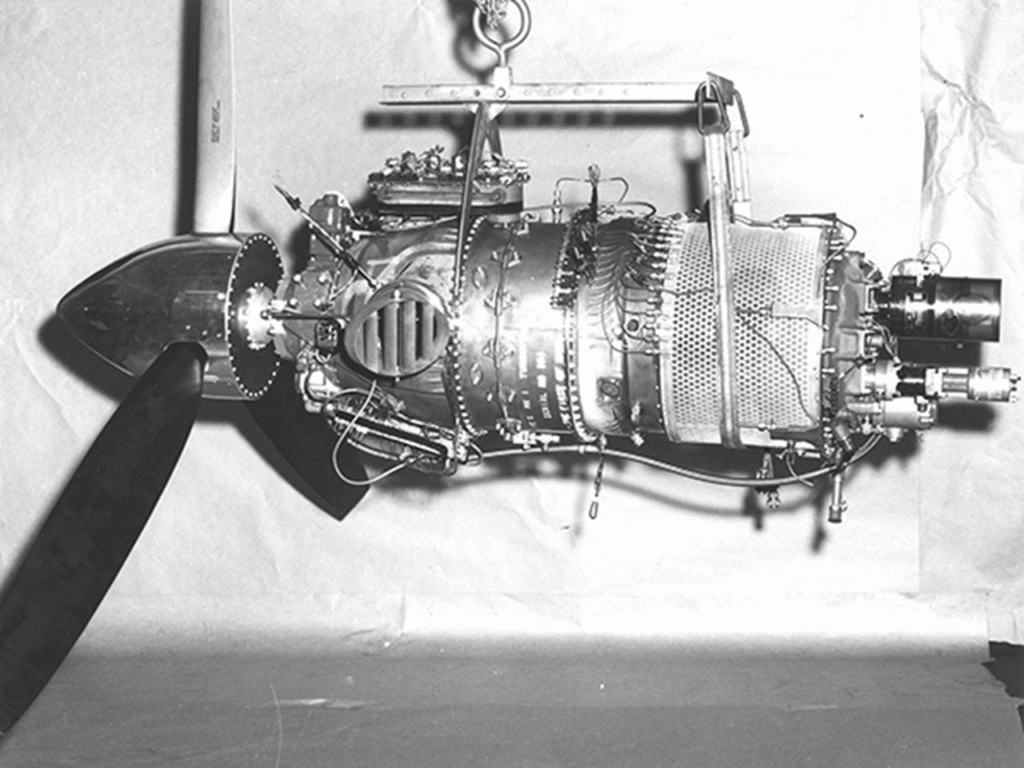
What Does This Mean for Horizon, AAM, and RAM?
With the Can-Do Crew 🇨🇦 working towards a full-size prototype of the Cavorite X7 by focusing on their fan-in-wing design, electronics, and other complex things, as well as being free from having to dedicate decades of work that Pratt & Whitney Canada diligently pursued to perfect a power plant like the PT6A, the 16 month timeline set by Horizon Aircraft will be Do-able. This is the Can-Do Crew 🇨🇦 afterall. They’ve put their minds to it, and they’ll get it done. The beautiful partnership between Horizon Aircraft and Pratt & Whitney Canada will be remembered in history similarly to how the Merlin engine complimented the P-51 Mustang. By sharing the same core values of safety, performance, and reliability, both Canadian pioneers in aviation, one decades proven, and the other starting off not only running, but taking off vertically, will stand to gain enormously from this mutually beneficial partnership. A Cavorite X7 will be the rugged, and dependable sky truck taking people and cargo across arctic tundras, deserts, and tropical rainforests hundreds of miles away. It will also be the luxurious private executive eVTOL taking VIPs across the galas and 5 star restaurants of world renown metropolises. Regional Air Mobility and Urban Air Mobility will be all possible with a Cavorite X7 thanks to the brains and hard work of Horizon’s soon to be legendary Can-Do Crew, as well as the pioneers at Pratt & Whitney Canada who stood before them decades ago.
Stay tuned to eVTOL buzz ✈️for test flight updates, tech deep dives, and exclusive interviews on the Horizon as this story evolves.
More Info:
Horizon Aircraft (official website): click here
Official Press Release: click here
The Legend Tells Its Story: click here
Horizon Aircraft post on LinkedIn: click here
Cert Center Canada: click here
RTX Hybrid-Electric Flight Demonstrator program achieves full power test milestone for propulsion system and batteries: click here
Alumnus John Maris Inducted into Canadian Aviation Hall of Fame: click here
Horizon Aircraft Accelerates eVTOL Development with Full‑Scale Cavorite X7 Prototype on the Horizon: click here
Horizon Aircraft’s Cavorite X7 Taking Shape for Success with $17M in Cash and New Additions to “Can-Do Crew” : click here
#fcff7d

